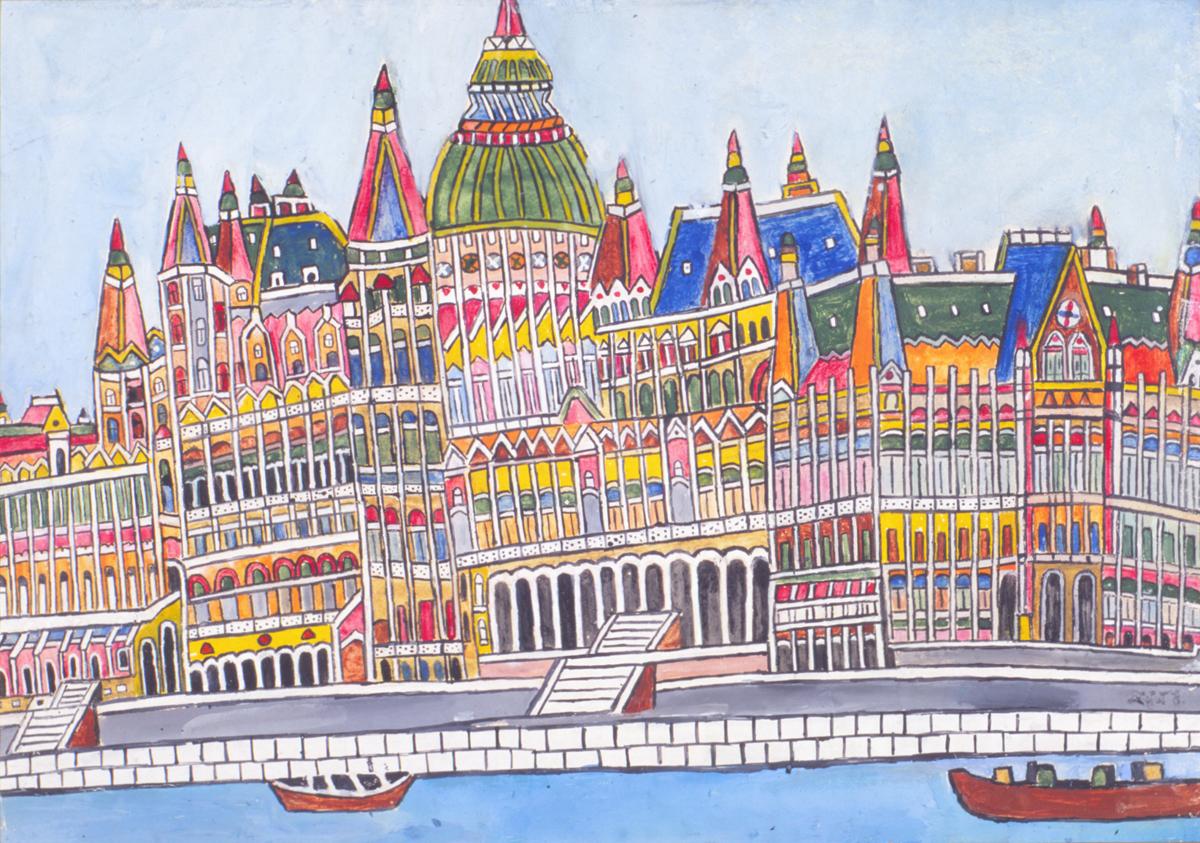ARCHITECTURE PORTRAITS
The exhibition "Architecture Portraits" marks the 25th anniversary of Infeld Haus der Kultur in Halbturn. In 2000, Viennese string producer Peter Infeld (1942–2009) transformed the hunting lodge of Halbturn Castle into a meeting place for international and local artists and musicians. Over the past quarter-century, the Infeld Haus der Kultur has hosted nearly 100 exhibitions and 100 concerts, all free of charge.
A significant aspect of a society’s cultural identity is reflected in the diverse structures that surround people in their daily lives. Even in early paintings, depictions of architecture were used to add depth to works. The architecture served as a backdrop or complementary element. By employing unusual perspectives or incidences of light, familiar motifs could be reinterpreted and experienced in a new way. From the 16th century onwards, architectural painting emerged as an independent form of Western art.
The exhibition "Architecture Portraits" brings together several impressive depictions of buildings. Spanning works by contemporary Austrian artists to Art Brut art works, the presentation highlights the diversity of the Infeld collection.
The magnificent Venetian palazzi in the works of Karl Goldammer are vivid in colour and rich in detail. His elaborately staged depictions of these architectural monuments evoke a yearning in viewers, letting them glimpse a lost paradise. While their inhabitants are absent, they have left behind numerous status symbols and markers of a once-great maritime power. Personal interpretations of La Serenissima are offered by Hans Staudacher and Anton Lehmden. The ever-changing nature of Venice’s architecture creates a dual impression - static on the one hand, yet dynamic and intriguing through the confrontation with new perspectives.
Eduard Angeli is a master of the aesthetic of deserted spaces. His melancholic, atmospheric works captivate viewers with their striking coldness. In contrast, Walter Schmögner’s residential complexes are infused with wit and humour. At the same time, these appear enigmatic, mysterious and challengingly static.
Emerik Fejes created his vibrant architecture works based on black-and-white postcards. Instead of brushes, he used matchsticks, driven by a desire to make the world more colourful and beautiful. He prioritised the imagination over appearance and colouring. Perspective detail was less important than architectural diversity.
The exhibition "Architecture Portraits" presents architecture works in all their variety: from poetic (Anton Lehmden) and enthusiastic (Hans Staudacher) to imaginative (Drago Jurak) and strikingly austere (Oswald Tschirtner).
Press Photos


